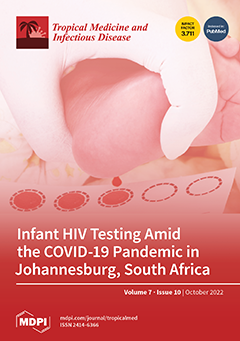The World Health Organization (WHO) recommended coronavirus disease 2019 (COVID-19) booster dose vaccination after completing the primary vaccination series for individuals ≥18 years and most-at-risk populations. This study aimed to estimate the pooled proportion of COVID-19 vaccine booster dose uptake and intention to get the booster dose among general populations and healthcare workers (HCWs). We searched PsycINFO, Scopus, EBSCO, MEDLINE Central/PubMed, ProQuest, SciELO, SAGE, Web of Science, Google Scholar, and ScienceDirect according to PRISMA guidelines. From a total of 1079 screened records, 50 studies were extracted. Meta-analysis was conducted using 48 high-quality studies according to the Newcastle-Ottawa Scale quality assessment tool. Using the 48 included studies, the pooled proportion of COVID-19 vaccine booster dose acceptance among 198,831 subjects was 81% (95% confidence interval (CI): 75–85%,
I2 = 100%). The actual uptake of the booster dose in eight studies involving 12,995 subjects was 31% (95% CI: 19–46%,
I2 = 100%), while the intention to have the booster dose of the vaccine was 79% (95% CI: 72–85%,
I2 = 100%). The acceptance of the booster dose of COVID-19 vaccines among HCWs was 66% (95% CI: 58–74%),
I2 = 99%). Meta-regression revealed that previous COVID-19 infection was associated with a lower intention to have the booster dose. Conversely, previous COVID-19 infection was associated with a significantly higher level of booster dose actual uptake. The pooled booster dose acceptance in the WHO region of the Americas, which did not include any actual vaccination, was 77% (95% CI: 66–85%,
I2 = 100%). The pooled acceptance of the booster dose in the Western Pacific was 89% (95% CI: 84–92%,
I2 = 100), followed by the European region: 86% (95% CI: 81–90%,
I2 = 99%), the Eastern Mediterranean region: 59% (95% CI: 46–71%,
I2 = 99%), and the Southeast Asian region: 52% (95% CI: 43–61%,
I2 = 95). Having chronic disease and trust in the vaccine effectiveness were the significant predictors of booster dose COVID-19 vaccine acceptance. The global acceptance rate of COVID-19 booster vaccine is high, but the rates vary by region. To achieve herd immunity for the disease, a high level of vaccination acceptance is required. Intensive vaccination campaigns and programs are still needed around the world to raise public awareness regarding the importance of accepting COVID-19 vaccines needed for proper control of the pandemic.
Full article






